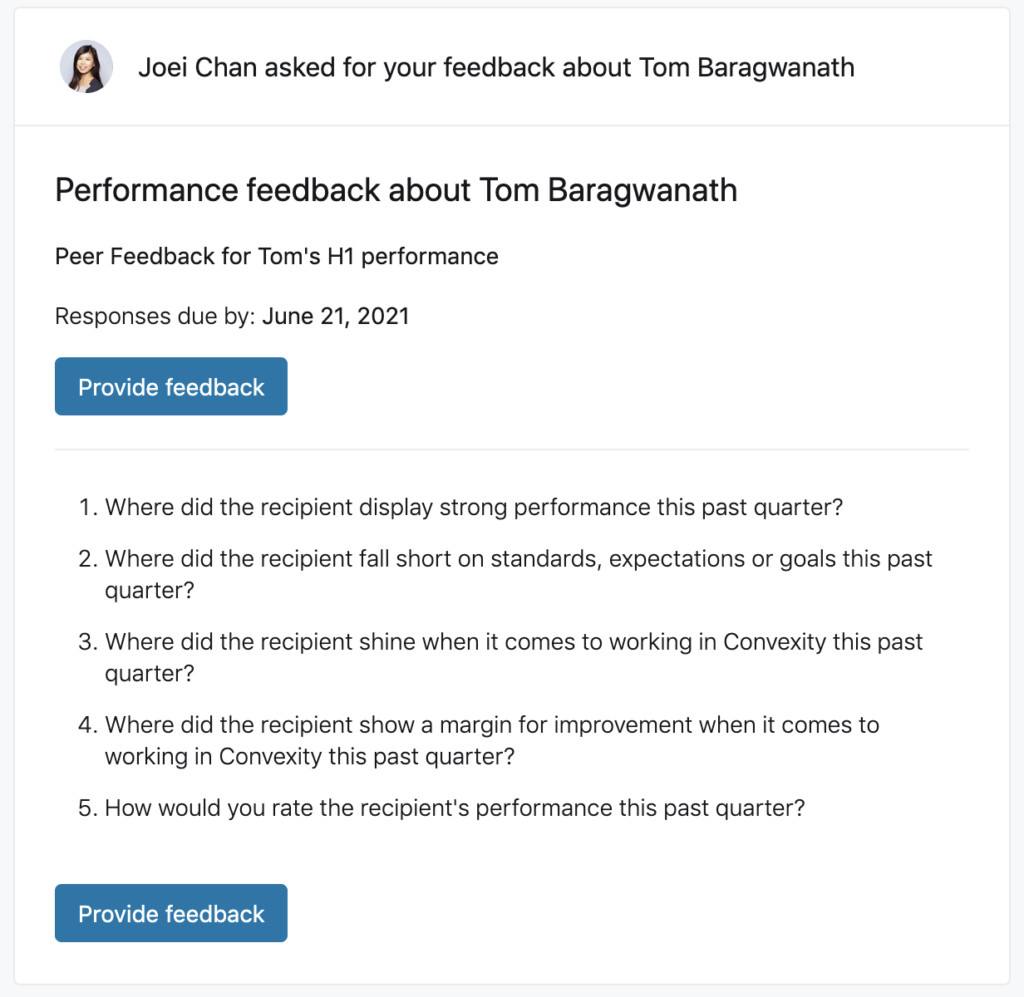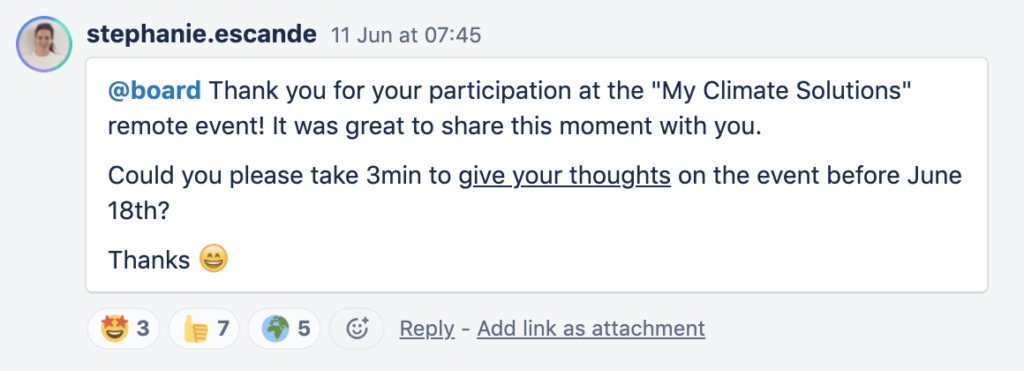Why are collaboration skills important?
There’s no doubt that workplace collaboration has become increasingly popular.
Where there once were rows of one-person cubicles, there are now open offices where colleagues are encouraged to share ideas on the fly. Departments participate in gamification activities as teams, and performance reviews include feedback from peers, not just managers. And of course, when it comes to learning and development (L&D), collaborative learning is fast becoming the preferred way to share workplace knowledge.
A Harvard Business Review article written in 2016 elaborates: “According to data we have collected over the past two decades, the time spent by managers and employees in collaborative activities has ballooned by 50% or more.” The author then goes on to say that, when not managed correctly, collaborative activities can actually be counterproductive.

Companies need to know how to encourage the right kind of collaborative skills — not leaving every person for themselves, but not going overkill, either.
When collaboration doesn’t take place at work — or when it’s being botched — employee morale and productivity take a hit:
Knowledge is siloed (or lost)
A lot of organizations will have a senior specialist who has accumulated a mountain of institutional knowledge — skills that are specific to their particular job and company. But what happens when they leave? Often their knowledge was never added to an internal knowledge base, so it goes with them, and it takes months to get their replacement onboarded and up to speed.
Learning doesn’t occur
Many experts argue that 20% of workplace learning happens from informal, social interaction with peers or mentors (the famous 70-20-10 rule). When people work to cut off from one another, there are fewer opportunities for this kind of knowledge sharing to happen. Arguably, it also cuts down on 70% of ‘hands-on learning,’ too.
Employees feel out of the loop
If upper management isn’t really collaborating and working together, the information won’t flow freely down the organization. Nothing’s worse than feeling like you’re just a cog in a wheel, without any understanding of the bigger picture of your company’s mission.
For these reasons and more, it’s important to build effective collaboration skills at work. Here are a few ideas for how:
7 ways to increase collaboration skills in your workplace
1. Spark curiosity conversations
More often than not, employees only really get to know a handful of people at the office. Probably, they’re on the employee’s own team, or someone they already had something in common with. But what about the other 90% of their colleagues?
Getting a better understanding of your coworkers’ jobs, personalities, likes, and dislikes can enhance workplace collaboration. An easy way to do that is through ‘curiosity conversations.’
The idea is simple: Set up a recurring way for colleagues who don’t already exchange a lot to chat informally. They can take the shape of ‘random coffees’ (in-person or virtual), or more formalized manual pairings.
Either way, the idea is for each participant to walk a mile in the other’s shoes, and discover something outside their comfort zone. If live sync-ups are too tricky, you can opt for a ‘Day in the Life’ type of training, where employees asynchronously share more detail about what their day-to-day entails (like we’re doing now at 360Learning):

2. Set up virtual coworking
You might be thinking that it’s all well and good to build collaboration skills when your teammates are physically in the same space — but what if everyone’s working remotely, or in a hybrid setup?
For that, there’s virtual coworking.
Virtual coworking is what it sounds like: an attempt to mimic the feel of a coworking space over the internet. An abundance of collaboration tools, like MURAL, Flow Club, Miro, and Prezi Video can help teams collaborate in a hybrid setting and share sticky notes, whiteboards, dynamic presentations, interactive infographics, and more.
As for getting connected, you don’t have to get fancy: A simple Zoom link or Google Meet will do the trick, or you can use your company’s webinar platform if you’ll be having many people on the call.
3. Design for the ‘two-day office’
As employees start trickling back into the office, there are a lot of opportunities to rethink how physical spaces are organized to facilitate collaboration. Hybrid work models are emerging as a viable option for people who enjoy the flexibility of working from home but miss the social aspect of in-person interaction.
Designers and architects are already thinking about how to create workspaces adapted to the ‘two days per week in the office’ approach. Here are a few recommendations from the creative studio Space and Pepper:
- “Replicate coffee-shop vibes by centralizing action around a community table and introducing a people connector in a barista role.
- Provide a variety of seating, allowing people to adjust according to the time and depth of a conversation and amount of conversation partners.
- Opt for flexible furniture that’s modular and adjustable. Different spatial experiences can be generated by avoiding fixed or built-in furniture.
- Support a range of creative working styles with a mixture of isolated, intimate one-person booths; collaborative workshop rooms; and more.”
4. Go for think, pair, and share
This technique was taken straight from the classroom. It’s an approach teachers love, but it’s also useful for adults in a corporate setting, too.
Let’s say you’ve got a work-related obstacle that nobody has a quick answer to. Instead of having everyone working on it in their corner, ask two teammates to think through the issue together.
Give them a timeline, and then check back in to have them share what they’ve discovered and some ideas for resolving the issue. This will get teammates working together, and also align with most adults’ preferences for a more self-directed learning approach.
5. Institute peer reviews
Peer reviews have become increasingly popular as ways to offset top-down management styles. Not only will a more 360-degree review process encourage collaboration on its own, but it might also encourage team members to interact more (and better) since they know their peers will be asked their opinion when it comes to performance assessment.
Here’s an example of the type of peer review we conduct at 360Learning:

6. Model cross-team collaboration
A different team can sometimes feel like an alien, closed-off community. They might have their own etiquette, tools, and processes. For instance, your team might use an email client and messaging apps for project management, while another team prefers video conferencing and daily stand-ups. For these reasons and more, it might be challenging to start working effectively with someone from another department.
Sometimes, you might find yourself discouraged from working together at all: A recent Accenture study found that 75 percent of the 1,500 executives surveyed said that “different business functions […] are competing against each other instead of collaborating on digitization efforts.”
This kind of infighting and misalignment stunts growth and wastes resources. Employees in leadership positions should model collaboration in a meaningful way, and incentivize their teams to actually work together. Consider using the same project management framework across departments and setting up recurring project meetings where everyone’s individual contributions are acknowledged, while also emphasizing the common goal.
7. Invest in team-building
An oldie but goodie. A well-thought-out team-building or gamification activity can help people feel part of the company culture, and help break the ice for colleagues who’ve never had the chance to get to know each other, laying the groundwork for future work-related collaboration.
At 360Learning, we’ve experimented with a variety of (virtual) team-building activities:
- Remote cheese and wine tasting
- Virtual Kintsugi pottery class
- A climate solutions challenge (to brainstorm ways to decrease our carbon footprints)

To make sure this kind of initiative can take off, see if you can set up a realistic quarterly budget, and make sure to request feedback from participants so that you can continually improve the experience:

Bring it together with collaborative learning
At 360Learning, we strive to build collaboration into pretty much every aspect of our work lives. Where it really shines through, however, is when it comes to learning initiatives, since our entire raison d’etre is based on the idea of collaborative learning.
If you’re looking to build more cooperation into your learning or L&D programs, here’s a nice recap of what collaborative learning is, and why we think it should be an essential part of any company’s L&D program:
About the author
Robin Nichols is the Managing Editor at 360Learning, a learning platform based on Collaborative Learning. Robin is interested in the crossroads of technology and culture and has worked as a content marketer for French Tech companies for 5+ years.

